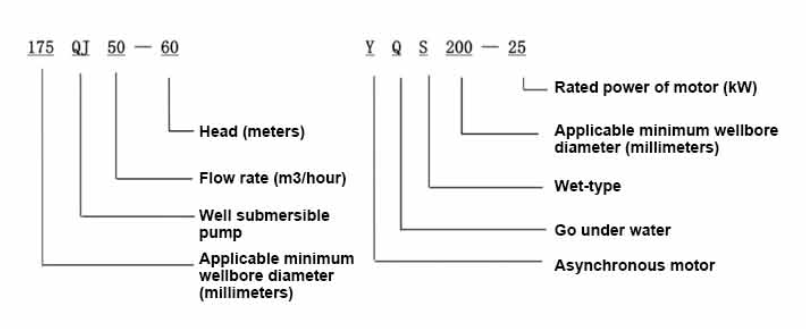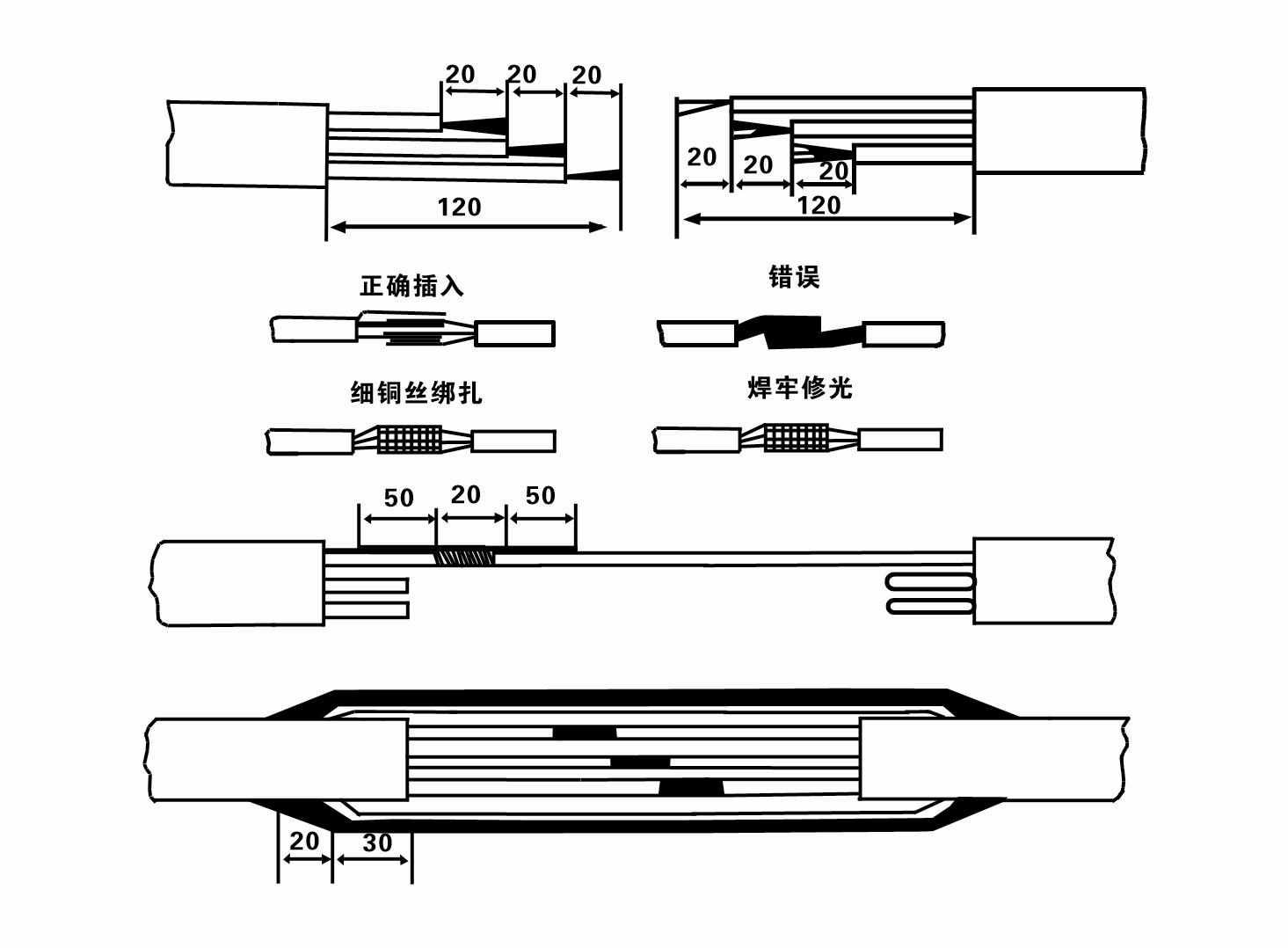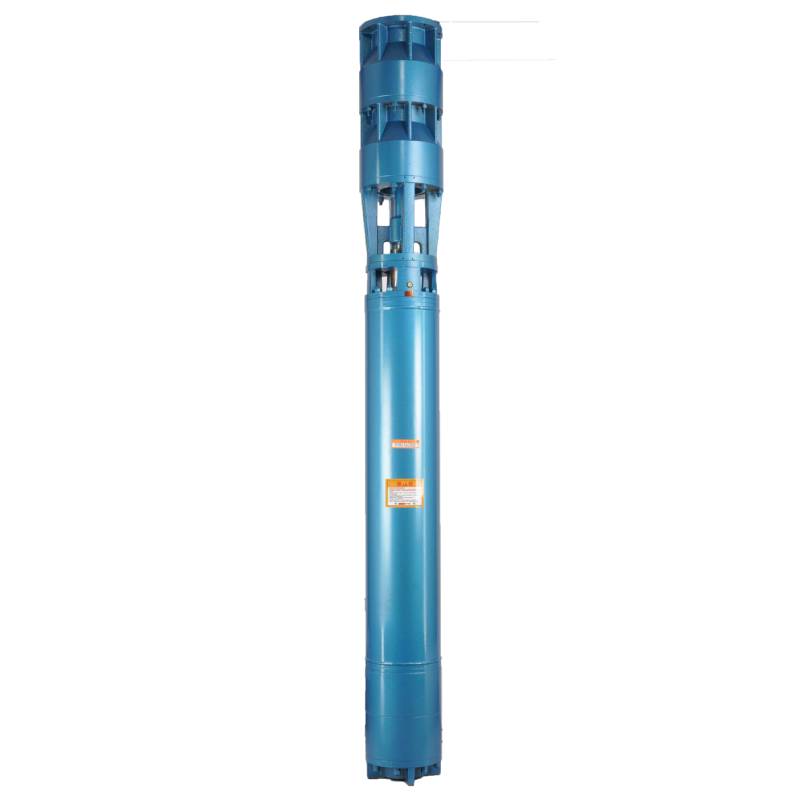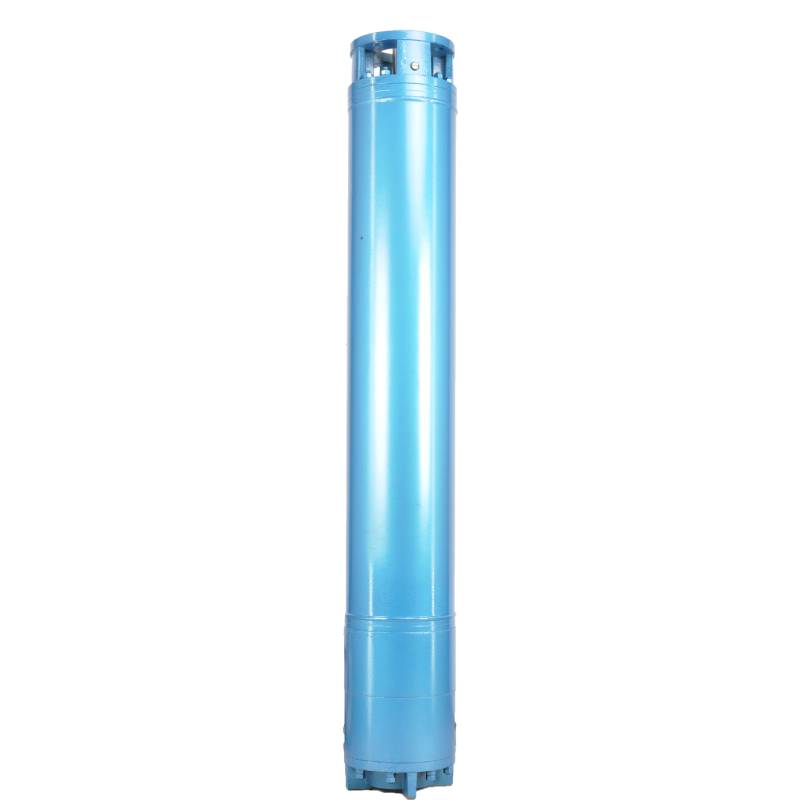This product adopts a variable frequency winding design, ensuring the motor's smooth conversion operation between 1HZ and 50HZ for a long time. This innovative design not only saves energy and prolongs service life, but also provides lasting and reliable performance in the work process. Whether in a home or industrial environment, this product will provide users with excellent efficiency and reliability, making it an indispensable tool in the manufacturing and production process.
1, barošanas avots: trīsfāzu maiņstrāva 380V (pielaide + / - 5%), 50 HZ (pielaide + / - 1%).
2, ūdens kvalitāte:
(1) water temperature is not higher than 20 °C;
(2) cieto piemaisījumu saturs (masas attiecība) nav lielāks par 0,01 %;
(3) PH vērtība (pH) 6,5-8,5;
(4) sērūdeņraža saturs nav lielāks par 1,5 mg/l;
(5) hlorīda jonu saturs nav lielāks par 400 mg/l.
3, motors ir aizvērts vai piepildīts ar ūdeni mitra konstrukcija, pirms lietošanas iegremdējamā motora dobumam jābūt pilnam ar tīru ūdeni, lai novērstu viltus piepildījumu, un pēc tam pievelciet ūdens iesmidzināšanas, gaisa atbrīvošanas skrūves, pretējā gadījumā nav atļauts izmantot
4, submersible pump must be completely submerged in the water, the diving depth is not greater than 70m, the bottom of the submersible pump from the bottom of the well is not less than 3m. 5, the well water flow should be able to meet the submersible pump water output and continuous operation, the submersible pump water output should be controlled at 0.7 - 1.2 times the rated flow.
6, akai jābūt taisnai, zemūdens sūkni nevar izmantot vai izgāzt, tikai vertikāli.
7, iegremdējamais sūknis ir jāsaskaņo ar kabeli atbilstoši prasībām un ārējai pārslodzes aizsardzības ierīcei.
8, sūknis ir stingri aizliegts bez ūdens bezslodzes pārbaudes iekārtas

| Modelis | Plūsma (m3/h) | Galva (m) |
Rotācijas ātrums (mainīt/punkts) |
Ūdens sūknis(%) | Izvads diametrs (mm) |
Piemērojams labi diametrs (mm) |
Novērtēts power(KW) |
Novērtēts spriegums (V) |
Novērtēts strāva (A) |
Motora efektivitāte (%) | power factorcosφ | Vienība Radiālais maksimālais izmērs (mm) |
Piezīme | |||||||||
| 300QJ200-40 | 200 | 40 | 2900 | 76 | 150 | 300virs | 37 | 380 | 77.8 | 85.0 | 0.85 | 281 | ||||||||||
| 300QJ200-60 | 60 | 55 | 115 | 85.5 | 0.85 | |||||||||||||||||
| 300QJ200-80 | 80 | 75 | 154.1 | 86.0 | 0.86 | |||||||||||||||||
| 300QJ200-100 | 100 | 90 | 183.8 | 86.5 | 0.86 | |||||||||||||||||
| 300QJ200-120 | 120 | 100 | 204.3 | 86.5 | 0.86 | |||||||||||||||||
| 300QJ200-140 | 140 | 125 | 249.5 | 87.5 | 0.87 | |||||||||||||||||
| 300QJ200-160 | 160 | 140 | 277.8 | 88.0 | 0.87 | |||||||||||||||||
| 300QJ200-180 | 180 | 160 | 317.5 | 88.0 | 0.87 | |||||||||||||||||
| 300QJ200-200 | 200 | 185 | 367.2 | 88.0 | 0.87 | |||||||||||||||||
| 300QJ200-240 | 240 | 220 | 436.6 | 88.0 | 0.87 | |||||||||||||||||
| 300QJ320-30 | 320 | 30 | 2900 | 77 | 200 | 300virs | 45 | 380 | 94.6 | 85.0 | 0.85 | 281 | ||||||||||
| 300QJ320-60 | 60 | 90 | 183.8 | 86.5 | 0.86 | |||||||||||||||||
| 300QJ320-90 | 90 | 125 | 249.5 | 87.5 | 0.87 | |||||||||||||||||
| 300QJ320-120 | 120 | 160 | 317.5 | 88.0 | 0.87 | |||||||||||||||||
This well submersible pump is a pump suitable for clean water. It is strictly prohibited to dig new wells and pump dirty water containing sediment. The voltage grade of the pump is 380/50HZ, and other submersible motors with different voltage grades need to be customized. Underground cables must be waterproof cables and must be equipped with starting equipment, such as distribution boxes, etc. The starting equipment should have common comprehensive motor protection functions, such as short circuit overload protection, dephase protection, undervoltage protection, grounding protection and idling protection, etc., in order to prevent timely tripping when abnormal conditions occur. During the installation and use process, the pump must have reliable grounding. It is strictly prohibited to push and pull the switch when your hands and feet are wet. The power supply must be cut off before installation and maintenance of the pump. An obvious sign "anti-electric shock" must be set up where the pump is used. Before going down the well or installation, the motor must be filled with distilled water or non-corrosive clean cold water, and the water inlet and outlet bolts must be tightened. When testing the pump on the ground, water must be filled into the pump chamber to lubricate the rubber bearings. The instant start time shall not exceed one second to check whether the steering is correct. Pay attention to safety when the pump is upright to prevent toppling and injury. Strictly in accordance with the provisions of the pump lift and flow range, to prevent the pump with a large flow at low lift or produce a large pull at high lift, resulting in extreme wear of thrust bearings and other parts, the motor overload and burn. After the pump into the well, the measurement of the motor to the ground insulation resistance should not be less than 100MΩ. After starting, regularly observe the voltage and current, and check whether the motor winding insulation meets the requirements; if the pump storage temperature below freezing point, should be drained to prevent the water in the motor cavity from freezing and cause the motor damage due to low temperature.
The pump part is mainly composed of pump shaft, impeller, shunt shell, rubber bearing, check valve body (optional) and other components. The motor part is mainly composed of base, pressure regulating diaphragm, thrust bearing, thrust plate, lower guide bearing seat, stator, rotor, upper guide bearing seat, sand ring, water inlet section, lead cable and other components.
Produkta galvenās īpašības ietver:
- 1.The motor is a water-filled wet submersible three-phase asynchronous motor. The motor cavity is filled with clean water, used to cool the motor and lubricate the bearing. The pressure regulating diaphragm at the bottom of the motor is used to adjust the expansion and contraction pressure difference of the water in the body caused by the temperature rise of the motor.
- 2. In order to prevent the sand particles from entering the motor, two sand seals are installed at the upper end of the motor shaft extension, and a sand control structure is formed by installing the sand ring.
- 3. In order to prevent the pump shaft from jumping when starting, the pump shaft is connected with the motor shaft through a coupling, and the thrust bearing is installed at the bottom of the motor.
- 4. The lubrication method of the motor and the pump bearing is water lubrication.
- 5. The stator winding of the motor adopts high quality submersible motor winding wire with high insulation performance.
- 6. The pump is designed by computer CAD, with simple structure and excellent technical performance.

(1) Sagatavošana pirms uzstādīšanas:
1. Pārbaudiet, vai iegremdējamais sūknis atbilst lietošanas nosacījumiem un darbības jomai, kas norādīta rokasgrāmatā.
2. Izmantojot smagu obiektu, kura diametrs ir vienāds ar iegremdējamā sūkņa maksimālo ārējo diametru, izmēra, vai urbuma iekšējais diametrs atbilst iegremdējamajam sūknim, un izmēra, vai urbuma dziļums atbilst uzstādīšanas prasībām.
3. Pārbaudiet, vai akas urbums ir tīrs un vai akas ūdens ir duļķains. Nekad neizmantojiet iegremdējamo elektrisko sūkni, lai mazgātu wellor sūkņa dubļus un smilšu ūdeni, lai izvairītos no priekšlaicīgiem iegremdējamā elektriskā sūkņa bojājumiem.
4. Pārbaudiet, vai metināšanas galviņas uzstādīšanas skavas novietojums ir piemērots un vai tas var izturēt visas vienības kvalitāti.
5. Pārbaudiet, vai iegremdējamā sūkņa sastāvdaļas ir pabeigtas un pareizi uzstādītas saskaņā ar montāžas shēmu rokasgrāmatā. Noņemiet filtra sietu un pagrieziet savienojumu, lai redzētu, vai tas griežas elastīgi.
6. Atskrūvējiet ūdens skrūvi un piepildiet motora dobumu ar tīru, nekodīgu ūdeni (piezīme. noteikti uzpildiet to), pēc tam pievelciet ūdensskrūvi. Pēc 12 stundu ūdens iesmidzināšanas motora izolācijas pretestība nedrīkst būt mazāka par 150M Q, mērot ar 500V kratīšanas galdu.
7. Cable joint, cut off a 120mm rubber sleeve from one end of the outgoing cable and the matching cable with an electrician's knifethen stagger the length of the three core wires in a stepped shape, peel off a 20mm copper core, scrape of the oxide layer on theoutside of the copper wire with a knife or sand cloth, and insert the two connected wire ends in palirs.After tying the layer tightly with fine copper wire, solder it thoroughly and firmly, and sand of any. burrs on the surface. Then, forthe three joints, use polyvester insulation tape to wrap them in a semi stacked manner for three lavers. Wrap the two ends of thewrapping layer tightywith nyion thread,and then use a semi stacked method to wrap the tape for three layers. Wrap the outellayer with high-pressure insulation tape for three layers. Finally, fold the threestrands together and repeatedly wrap them for fivelayers with high-pressure tape. Each layer must be tightly tied, and the interlayer joints must be tight and fimm to prevent water frompenetrating and damaging the insulation, After wrapping, soak in water at room temperature of 20 ’c for 12 hours, and measurethe insulation resistance with a shaking table, which should not be less than 100M Ω
Pievienotā kabeļa elektroinstalācijas procesa shēma ir šāda:
8. Izmantojiet multimetru, lai pārbaudītu, vai trīsfāzu vadi ir savienoti un vai līdzstrāvas pretestība ir aptuveni līdzsvarota.
9. Pārbaudiet, vai ķēde un transformatora jauda nav pārslogota, un pēc tam pievienojiet pārslodzes aizsardzības slēdzi vai palaišanas aprīkojumu. Konkrētus modeļus skatiet 2. tabulā un pēc tamIelejiet ūdens spaini ūdens sūknī no ūdens sūkņa izplūdes atveres, lai ieeļļotu sūkņa gumijas gultņus, un pēc tam novietojiet iegremdējamo elektrisko sūkni vertikāli un stabili. Sāciet (ne vairāk kā vienu sekundi) un pārbaudiet, vai stūrēšanas virziens atbilst stūres zīmei. Ja nē, nomainiet divus trīsfāzu kabeļa savienotājus. Pēc tam uzstādiet filtru un sagatavojieties nolaišanai akā. Ja to lieto īpašos gadījumos (piemēram, grāvjos, grāvjos, upēs, dīķos, dīķos utt.), elektriskajam sūknim jābūt droši iezemētam.
(2) Uzstādīšanas aprīkojums un instrumenti:
1. Viens celšanas ķēžu pāris vairāk nekā divām tonnām.
2. Statīvs, kura vertikālais augstums nav mazāks par četriem metriem.
3. Divas piekārtas virves (stiepļu troses), kas var izturēt svaru, kas pārsniedz vienu tonnu (var izturēt visa ūdens sūkņu komplekta svaru).
4. Uzstādiet divus skavu (šīnu) pārus.
5. Uzgriežņu atslēgas, āmuri, skrūvgrieži, elektroinstrumenti un instrumenti utt.
(3) Elektriskā sūkņa uzstādīšana:
1. Iegremdējamā elektriskā sūkņa uzstādīšanas shēma ir parādīta 2. attēlā. Konkrētie uzstādīšanas izmēri ir parādīti 3. tabulā "Iegremdējamā elektriskā sūkņa uzstādīšanas izmēru saraksts".
2. Iegremdējamos elektriskos sūkņus, kuru augstums ir mazāks par 30 metriem, var tieši ievilkt akā, izmantojot šļūtenes un stiepļu troses vai citas kaņepju troses, kas var izturēt visas mašīnas, ūdensvadu un caurulēs esošo ūdeni.
3. Sūkņiem, kuru augstums pārsniedz 30 metrus, tiek izmantotas tērauda caurules, un uzstādīšanas secība ir šāda:
①Izmantojiet skavu, lai nofiksētu ūdens sūkņa daļas augšējo galu (šobrīd motors un ūdens sūknis ir savienoti), paceliet to ar piekārtu ķēdi un lēnām piesieniet akā, līdz uzlieciet skavu uz akas galvas un noņemiet piekarināma ķēde.
② Izmantojiet citu skavu pāri, lai nostiprinātu cauruli, paceliet to ar piekārtu ķēdi 15 cm attālumā no atloka un lēnām nolaidiet. Starp caurules atloku un sūkņa atlokuIevietojiet gumijas paliktni vietā un vienmērīgi pievelciet cauruli un sūkni ar skrūvēm, uzgriežņiem un atsperu paplāksnēm.
③ Nedaudz paceliet iegremdējamo sūkni, noņemiet skavu ūdens sūkņa augšējā galā, cieši piesieniet kabeli pie ūdens caurules ar plastmasas lenti un lēnām piesieniet to, līdz skava ir novietota pie akas galvas.
④Izmantojiet to pašu metodi, lai visas ūdens caurules iesietu akā.
⑤Pēc tam, kad izvades kabelis ir pievienots vadības slēdzim, tas tiek pievienots trīsfāzu barošanas avotam.
(4) Lietas, kas jāņem vērā uzstādīšanas laikā:
1. Ja sūknēšanas procesā tiek konstatēta iesprūšanas parādība, pagrieziet vai pavelciet ūdens cauruli, lai pārvarētu iesprūšanas vietu. Ja dažādi pasākumi joprojām nedarbojas, lūdzu, nespiediet sūkni uz leju, lai izvairītos no zemūdens elektriskā sūkņa un akas bojājumiem.
2. Uzstādīšanas laikā pie katras caurules atloka jānovieto gumijas paliktnis un vienmērīgi jāpievelk.
3. Kad ūdens sūknis ir nolaists akā, tas jānovieto akas caurules vidū, lai sūknis ilgstoši nedarbotos pret akas sienu, izraisot sūkņa vibrāciju un motora slaucīšanu un degšanu. .
4. Nosakiet ūdens sūkņa dziļumu līdz akas dibenam atbilstoši akas plūstošajiem smilšu un dūņu apstākļiem. Neapglabājiet sūkni dubļos. Attālums no ūdens sūkņa līdz akas dibenam parasti nav mazāks par 3 metriem (skat. 2. attēlu).
5. Ūdens sūkņa ūdens ieplūdes dziļumam jābūt ne mazākam par 1-1,5 metriem no dinamiskā ūdens līmeņa līdz ūdens ieplūdes mezglam (skat. 2. attēlu). Pretējā gadījumā ūdens sūkņa gultņi var tikt viegli sabojāti.
6. Ūdens sūkņa pacēlājs nedrīkst būt pārāk zems. Pretējā gadījumā uz urbuma ūdens cauruļvada ir jāuzstāda aizbīdņa vārsts, lai kontrolētu sūkņa plūsmu nominālajā plūsmas punktā, lai novērstu motora pārslodzi un izdegšanu lielu plūsmas ātrumu dēļ.
7. Kad ūdens sūknis darbojas, ūdens izvadei jābūt nepārtrauktai un vienmērīgai, strāvai jābūt stabilai (nominālos darba apstākļos parasti ne vairāk kā 10% no nominālās strāvas), un tajā nedrīkst būt vibrācijas vai trokšņa. Ja ir kādas novirzes, mašīna ir jāaptur, lai noskaidrotu cēloni un to novērstu.
8. Uzstādot, pievērsiet uzmanību motora zemējuma vada iestatījumam (sk. 2. attēlu). Ja ūdens caurule ir tērauda caurule, izvadiet to no akas galvas skavas; ja ūdens caurule ir plastmasas caurule, novadiet to no elektriskā sūkņa zemējuma atzīmes.
- 1.After the submersible pump is installed, check the insulation resistance and three-phase conduction from the switch again, check whether the instrument and the connection of the start equipment are wrong, if there is no problem, the trial machine can be started, and observe whether the indicator readings of the instrument exceed the rated voltage and current specified on the nameplate after the start, and observe whether the pump has noise and vibration phenomenon. If everything is normal, it can be put into operation.
- 2. After the first operation of the pump for four hours, the motor should be shut down to test the thermal insulation resistance quickly, and its value should not be less than 0.5 megaohm.
- 3. After the pump is shut down, it should be started after five minutes to prevent the water column in the pipe from being completely reflowed and causing excessive motor current and burnout.
- 4.After the pump is running normally, in order to prolong its service life, it is necessary to check the power supply voltage, running current and insulation resistance regularly to see if they are normal.If the following conditions are found, the equipment should be shut down immediately to troubleshoot.
- (1)Under the rated working conditions, the current exceeds 20% of the rated value.
- (2)The dynamic water level drops to the inlet part, resulting in intermittent water discharge.
- (3)The submersible pump vibrates violently or emits noisy noise.
- (4)The power supply voltage is lower than 340 volts.
- (5)A fuse is burned out.
- (6)The water pipe is damaged.
- (7)The thermal insulation resistance of the motor to the ground is less than 0.5 megaohm.
- These inspections will help to ensure the normal operation of the pump, improve its reliability and stability, so as to ensure its durability and service life.
- 5.unit disassembly:
- - untie cable rope, remove the pipeline part, remove the wire plate.
- - pieskrūvējiet ūdens skrūvi, ielieciet ūdeni motora kamerā.
- - remove the filter, loose the fixed screw on the coupling fixed motor shaft.
- - screw down the bolt connected with the motor at the inlet junction, separate the pump and the motor (pay attention to the unit cushion when separating, prevent the bending of the pump shaft)
- - pump disassembly sequence is: (see figure 1) inlet junction, impeller, guide housing, impeller...... check valve body, when removing the impeller, use special tools to loosen the conical sleeve of the fixed impeller first, avoid bending the pump shaft and each part in the disassembly process.
- - motor disassembly process is: (see figure 1) place the motor on the platform, remove the nut, base, shaft head lock nut, thrust plate, key, lower guide bearing seat, double head bolt from the bottom of the motor in turn, then take out the rotor (pay attention not to damage the wire package) and finally remove the connecting section and upper guide bearing seat.
- - unit assembly: Before assembly, the rust and dirt of the parts should be cleaned, and the mating surfaces and fasteners should be coated with sealant. Then they should be assembled in the reverse order of disassembly (the up and down momentum of the motor shaft is about 1 mm after assembly). After assembly, the coupling should be flexible, and then the filter screen test machine.
- 6.The submersible pump should be dismantled and repaired according to Article 5 for each operation year, or less than one year, but the submersible time has reached two years, and the worn parts should be replaced.
1, izlaidiet ūdeni motora dobumā (īpaši ziemā, lai motors nesasaltu) un labi piesiet kabeli.
2, store in an indoor room without corrosive substances and gases, with a temperature below 40 °C.
3, ilgstošai lietošanai jāpievērš uzmanība iegremdējamo sūkņu rūsas novēršanai.
- Darbrats
- Vārpstas uzmava
- Gumijas vārpstas uzmava
-
Blīvgredzens
01 Dziļās akas ūdens ņemšana
02 Daudzstāvu ūdensapgāde
03 kalnu ūdens apgāde
04 torņa ūdens
05 Lauksaimniecības apūdeņošana
06 dārza laistīšana
07 upes ūdens ņemšanas vieta
08 sadzīves ūdens










